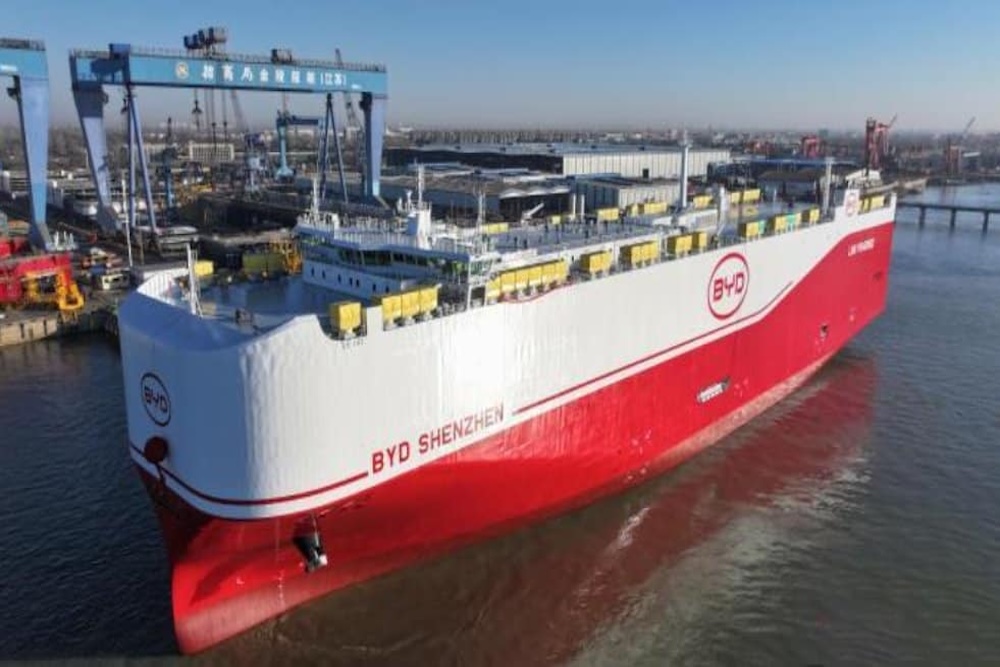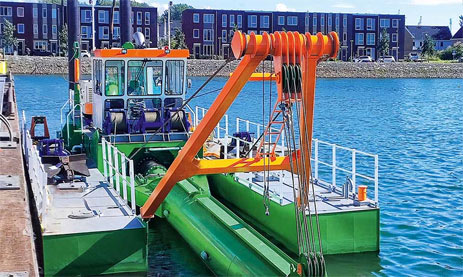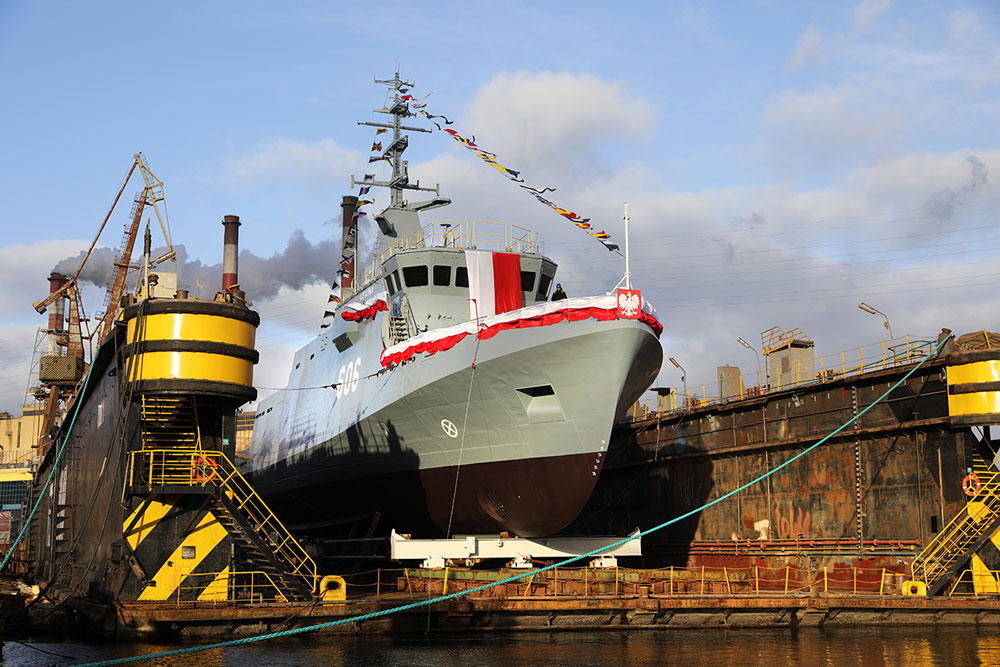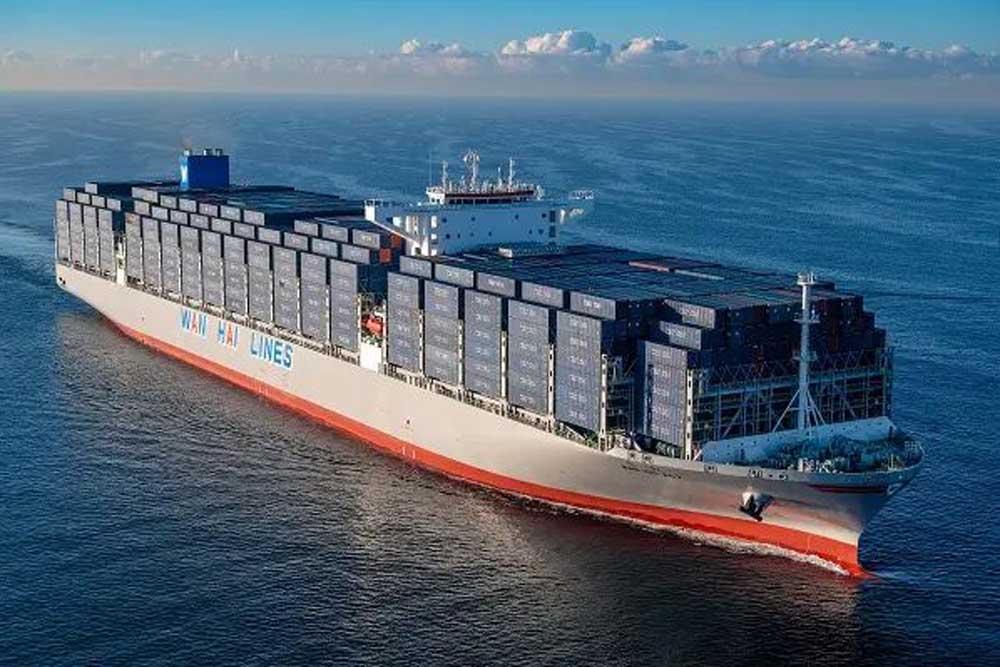The Chinese e-car manufacturer BYD Company has launched what it claims to be the world’s largest car carrier (Pure Car and Truck Carrier, PCTC), the “BYD Shenzhen”, at a shipyard in Yangzhou in the eastern Chinese province of Jiangsui.
The 219-metre-long and 37.7-metre-wide freighter can transport up to 9,200 standard vehicles (CEU). The ship is now BYD‘s fourth car freighter. The company, which is one of China’s largest car manufacturers and delivered more electric cars than Tesla last year, is planning to launch a total of eight cargo ships by the beginning of 2026 in order to drive its global expansion. Around €640m has been earmarked for the construction of these ships, with two further freighters available to order.
The “BYD Shenzhen” is an approximately 20 metres longer version of the three predecessor ships “BYD Explorer No. 1”, “BYD Hefei” and “BYD Changzhou”, which have a capacity of around 7,000 cars. The first ship, the 199.9 metres long “BYD “Explorer No.1”, which was built by the China State Shipbuilding Corporation, made its debut at the BLG Autoterminal in Bremerhaven almost exactly a year ago and has since been back to the seaport several times to unload cargo.

With a capacity of 9,200 vehicles, the “BYD Shenzhen”, named after the southern Chinese city of Shenzhen, the first headquarters of BYD, which was founded in 1995, surpasses the largest car carrier to date, the “Höegh Aurora“, which has a capacity for 9,100 vehicles. As BYD explained, the ship is not only the largest, but also the “most environmentally friendly car carrier in the world”, primarily thanks to its dual-fuel technology, which allows it to run on both marine diesel and LNG.
The ship is also said to have BYD’s own batteries on board, although there are no further details on this so far, meaning that the ship could run on battery power, at least near the coast. There are no details yet as to when the “BYD Shenzhen” will start sailing.
Eight transport ships – a risk for BYD?
BYD not only builds cars, but also manufactures the batteries itself. BYD also operates a lithium mine to supply raw materials for production. With its own fleet of ships, BYD wants to control the export of its vehicles itself and not be slowed down by a lack of freight capacity. Nevertheless, experts consider eight large transport ships to be a risky move – as BYD’s export business has not yet developed as expected. Only around 10% of the 4.25 million new BYDs sold last year were sold outside China.
It was only at the end of the year that the new “BYD Changzhou”, which was built by the Chinese shipyard CIMC Raffles, was in Europe for the first time and brought around 5,000 electric cars from the Chinese car manufacturer to the ports. Unlike the “BYD Explorer No. 1”, which is owned by Zodiac Maritime and exclusively chartered by BYD, the “BYD Hefei” and “BYD Changzhou” are owned by the car manufacturer.














